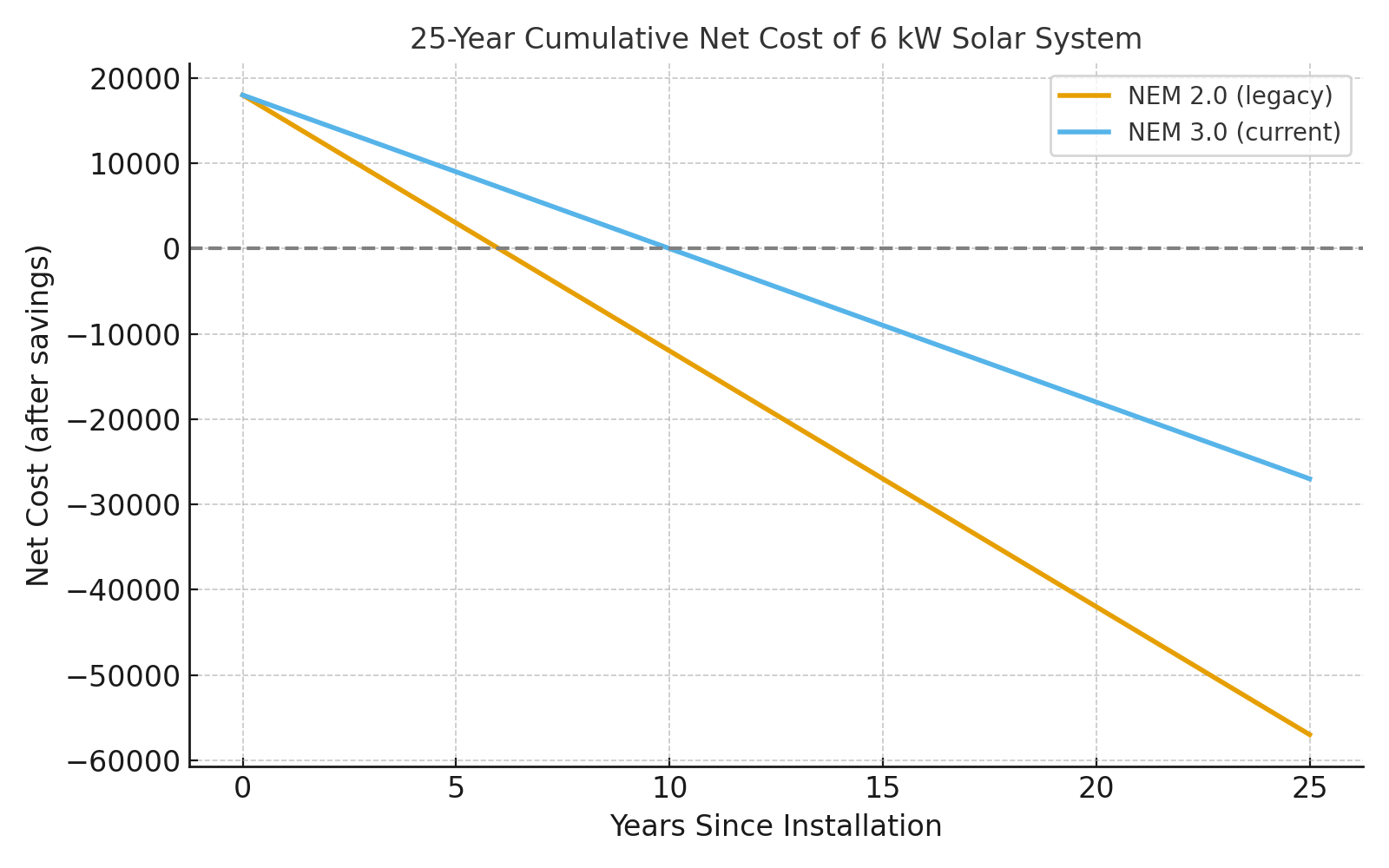Key points at a glance
Title 24 Solar Mandate
Since Jan 1, 2020, most new single‑family homes and low‑rise multifamily buildings in CA must include PV, with limited exemptions.
Solar Rights & Streamlined Permitting
HOAs and local governments cannot unreasonably restrict solar. AB 2188 and SB 379 speed approvals (e.g., SolarAPP+).
NEM 3.0 (Net Billing)
Export credits reflect avoided‑cost rates (≈ 75–80% lower than retail). Batteries help maximize savings under NEM 3.0.
Targeted Incentives
DAC‑SASH provides up to ~$3/W for eligible households. Solar value is excluded from property tax assessments (through 2026 installs).
State‑Level Legislation & Regulations
Solar Mandate for New Homes (Title 24)
California’s Building Energy Efficiency Standards (Title 24, Part 6) require rooftop solar on virtually all new single‑family homes and low‑rise multifamily (≤ 3 stories) starting January 1, 2020. Typical system sizing is tied to floor area and expected load, often ~2.7–5.7 kW for an average new home. Exemptions include roofs with inadequate solar access and qualified community solar.
Cost impact: The California Energy Commission estimated roughly an $8,400 addition to the purchase price for a new home, but projected bill savings of about $19,000 over 30 years. Rolling the system cost into the mortgage typically keeps net monthly impact modest compared with the energy savings.
Solar Rights & Permitting Laws
The Solar Rights Act limits HOA or local rules that would materially increase cost (by more than $1,000) or reduce output (by more than 10%). AB 2188 (2014) requires expedited permitting for small residential systems, and SB 379 (2022) requires large jurisdictions to provide instant online permits for code‑compliant systems via platforms like SolarAPP+.
Good to know
- Solar Shade Control Act limits new obstructions that would significantly shade existing solar.
- Many cities now offer instant permits for standard rooftop PV.
Net Metering: NEM 1.0 → NEM 3.0
Under NEM 1.0/2.0, exported solar was credited at retail rates, enabling some homeowners to offset most usage charges. NEM 3.0 (effective April 2023) values exports at avoided‑cost rates that vary by hour and season, typically far lower than retail. Batteries are increasingly recommended so evening consumption uses stored solar rather than drawing grid power at peak prices.

Other State Initiatives & Requirements
- California Solar Initiative (CSI): Phased rebates (2007–2016) that helped scale the market; now sunset for standard residential systems.
- Low‑Income Programs (DAC‑SASH): Up to ~$3/W for eligible single‑family homes in disadvantaged communities; often results in no‑cost systems via nonprofits like GRID Alternatives.
- Property Tax Exclusion: Active Solar Energy System Exclusion prevents assessment increases from PV added to existing properties for systems installed through December 31, 2026.
Local Focus: Los Angeles County & San Bernardino County
Los Angeles County
Within the City of Los Angeles, LADWP (a municipal utility) operates outside CPUC jurisdiction. Historically it offered the Solar Incentive Program; current economics rely on its net metering structure and program pilots. The City enforces Title 24 solar on new construction.
San Bernardino County
The City of San Bernardino provides instant online permitting for qualifying rooftop PV via SolarAPP+, reducing project timelines. GRID Alternatives has deployed many no‑cost systems locally using DAC‑SASH funding.
25‑Year Cost of a Typical 6 kW System
System cost: ~$18,000–$22,000 (pre‑incentive). Savings: Under NEM 3.0, lifetime savings often land in the ~$40,000–$60,000 range depending on usage and utility rates. A battery improves self‑consumption and evening rate avoidance. Payback: Frequently 8–12 years with storage (longer for solar‑only).

FAQs
Does NEM 3.0 make solar a bad deal?
Can my HOA block my panels?
Are there programs for low‑income households?
Sources & Further Reading
- California Energy Commission • Title 24 (Building Energy Efficiency Standards)
- Los Angeles Times coverage of the 2020 new‑homes solar mandate
- California Solar Rights Act and HOA guidance
- AB 2188 (2014) and SB 379 (2022) on streamlined solar permitting
- CPUC Net Billing (NEM 3.0) proceedings and summaries
- GRID Alternatives • DAC‑SASH program
- California’s Active Solar Energy System Property Tax Exclusion
